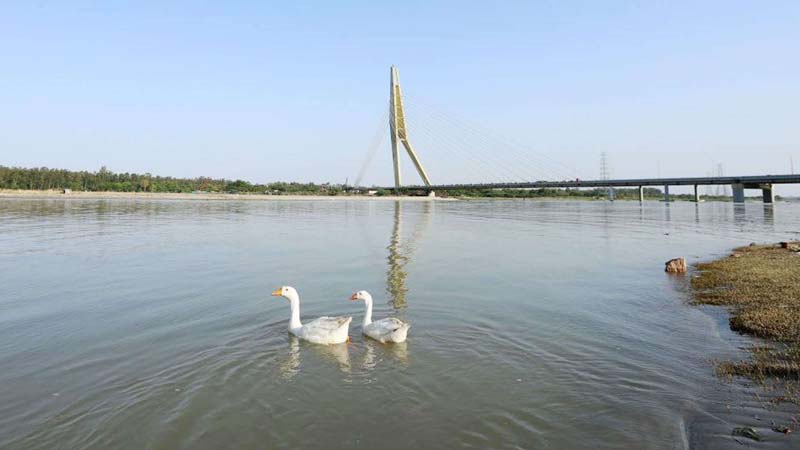Pollution in the Yamuna dipped by up to 30% and the quality of waste water in drains improved by up to 80% in the first week of April, an assessment by the Delhi Pollution Control Committee (DPCC) has found.
Though the Yamuna stretch below Wazirabad Barrage still does not meet quality standards, a significant improvement was observed as a result of more fresh water flow in the river and less load of pollutants in drains during the coronavirus lockdown, a DPCC official said.
Pollution in the Yamuna dipped by up to 30% and the quality of waste water in drains improved by up to 80% in the first week of April, an assessment by the Delhi Pollution Control Committee (DPCC) has found.
Though the Yamuna stretch below Wazirabad Barrage still does not meet quality standards, a significant improvement was observed as a result of more fresh water flow in the river and less load of pollutants in drains during the coronavirus lockdown, a DPCC official said.
However, this was still much higher than the minimum standard of 3 mg/l set by the environment ministry for quality criteria of bathing water. The BOD at Khajuri Paltoon Pool, where the Najafgarh drain meets the river, was 42% higher than what was recorded last April.
“This is because there is flow of untreated sewage into the drain from unauthorised colonies in its catchment area,” the DPCC official said. The quality of water begins to improve as the river flows down from here, which experts said showed its ability to revive on its own in the absence of pollutants.
The dissolved oxygen level at four out of five locations, where it was ‘nil’ last April, also increased. It was 2.3 mg/l near ITO and Nizamuddin, 4.2mg/l at Agra Canal near Jaitpur and 4.8 mg/l at Agra Canal near Okhla Barrage. However, it still did not meet the minimum standard of 5 mg/l.
The DPCC assessment also found that the average flow of water in the river was 3,900 cusecs so far this month, as compared to 1,000 cusecs last April. Officials from the Delhi Jal Board said this was because of good rainfall recorded in March in the catchment area of the Yamuna.
Meanwhile, the level of BOD has also dropped in drains from last year, with the Civil Mill drain recording an 80% reduction from 135 mg/l last April to 27 mg/l, and the ISBT drain recording a 68% reduction from 28 mg/l to 9 mg/l.
The Barapullah drain, however, witnessed a 32% increase in pollution load from 94 mg/l to 124 mg/l. “We have drawn samples from this drain again, and if the BOD concentration is still high, we will check what is causing it,” the DPCC official said.

